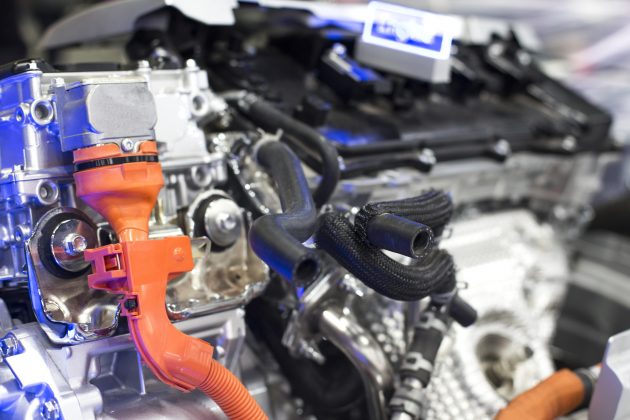
Hybridization and electric vehicle segments to boost global powertrain industry, according to Frost & Sullivan
by CM Staff

Internal combustion engines face more competition from electrified powertrains following stricter emission norms.

Hybridization and Electric Vehicle Segments to Boost Global Powertrain Industry, Finds Frost & Sullivan
SANTA CLARA — Frost & Sullivan’s recent analysis on the global powertrain industry finds that electric vehicles are gaining in popularity against the dominant internal combustion engines (ICE) segment. As governments push for a carbon-neutral economy, lowering emissions will be key, with powertrain electrification playing a vital role. Light vehicle (LV) sales worldwide are estimated to reach 80.2 million units in 2021 from 74.6 million units in 2020, growing at 7.5%. Mild hybridization will continue to be the fastest-growing trend in the short to medium term, ahead of battery electric vehicles (BEVs), fuel cell electric vehicles (FCEVs), and plug-in hybrid electric vehicles (PHEVs).
“Conventional ICE-powered vehicles face intense competition from powertrain electrification, resulting in lower cost and increased range. Further, with the declining trend of ICE-powered vehicles sales, EVs (BEVs and PHEVs) and even full hybrid electric vehicles (FHEVs) are likely to grow at an impressive rate,” said Bharath Kumar Srinivasan, Senior Industry Analyst, Mobility at Frost & Sullivan. “From an opportunity perspective, with the continued demand for lowering emissions and fuel consumption, original equipment manufacturers (OEMs) should offer direct injection and boosting technologies based on regional preferences, cost, and performance.”
Key regional insights include:
- North America: With the new government supporting stricter emissions norms and reinstating California’s capacity to set its own emission standards, downsizing and boosting technologies will find increased adoption, along with 48V mHEVs, to improve emissions and fuel economy.
- Europe: Diesel vehicle sales will continue to decline, while mild hybrids will witness high growth rates. Extended lockdowns across Europe in 2021 and slower economic growth will slow European automotive sales recovery in 2021, with the 16 million unit sales of 2019 getting breached only in 2022.
- ASEAN: Continuing its position as a manufacturing hub, ASEAN is focusing on emission cuts through blended fuels, with vehicle electrification playing a supporting role in mild hybridization in the form of 12V systems.
- China: While EVs will continue to grow, government support for hybrid vehicles will result in increased adoption of vehicle hybridization by the OEMs in 2021, with the share of conventional ICE vehicles continuing to shrink.
- India: Demand for diesel powertrains in India will increase with expected launches from India’s key OEM Maruti Suzuki, while the more stringent CAFÉ regulations in 2022 will increase powertrain electrification.
Global Powertrain Outlook 2021 is the latest addition to Frost & Sullivan’s Mobility research and analyses available through the Frost & Sullivan Leadership Council, which helps organizations identify a continuous flow of growth opportunities to succeed in an unpredictable future.
For further information on this analysis, Global Powertrain Outlook 2021, please visit: http://frost.ly/66d